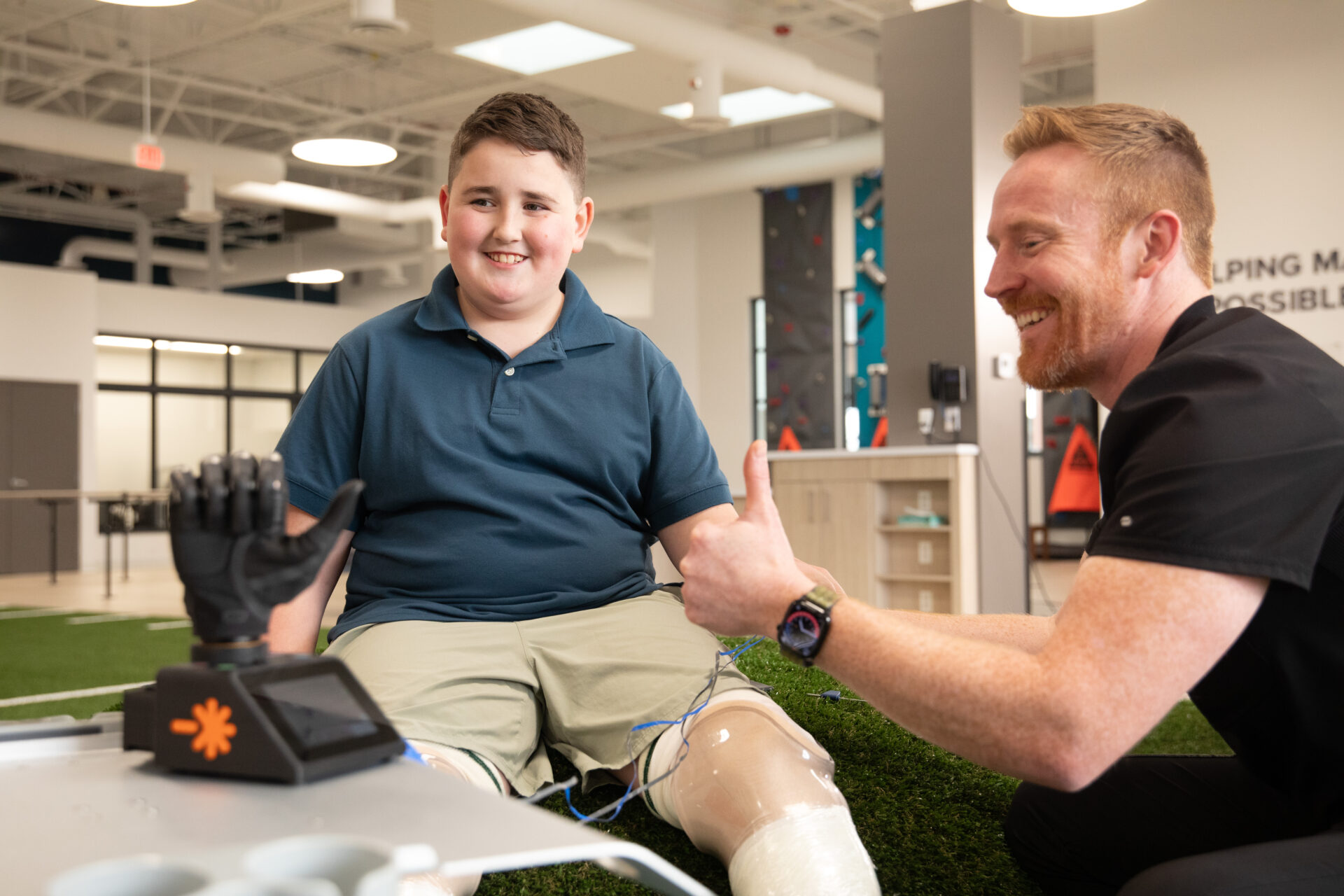
Hand or Partial Hand Loss
Hand and finger amputations are the most common upper limb amputation, and there are many prosthetic solutions available. Many hand and partial hand amputations are due to trauma, and it is common to experience limited range of motion, misalignment of remaining fingers, hypersensitivity or insensitivity, scarring and lack of strength in the remaining portions of the hand. Your Hanger Clinic team will work closely with your medical and rehabilitation team as you progress through your rehabilitation to provide the care needed throughout your journey.

Finding a Prosthetist
If you have recently experienced an amputation, we encourage you to find a prosthetist while you are recovering, in order to plan for your prosthesis. However, it’s never too late to find a prosthetist and explore your options.
Our Upper Limb Prosthetic Specialty Network is experienced in building and customizing prostheses for all levels of upper limb loss and limb difference and see patients across the country. Your prosthetist will review your unique situation and goals, and work with you and your care team to decide on the best prosthetic options for you.
In addition to your unique needs and goals, your prosthetist will keep several functional considerations in mind as they evaluate your prosthetic options: protection of the residual limb and appropriate fit, aesthetically pleasing as well as durable device selection, and the efficacy of your device.
Learn More About Hand and Partial Hand Solutions >
Partial Hand Considerations
One of the top reasons to use a partial hand prosthesis is confidence and normal use of your impacted hand. Even if your partial hand prosthesis is only a finger or two, many people say it is easier to hold spare change, grasp irregularly shaped objects, stabilize papers, and so much more.
Innovations in Partial Hand Prosthesis Control
Hanger Clinic has partnered with OrthoCarolina to offer the groundbreaking combination of a surgical procedure (muscle transfer) paired with a myoelectric hand that can allow for individual finger control after partial hand limb loss.
Learn More About the Partnership >
Request a Free Evaluation
Speak with a Hanger Clinic Upper Limb Prosthetic Specialty Network prosthetist specializing in hand and partial hand prostheses.
Latest Updates
Subscribe to stay up-to-date on our latest posts.


